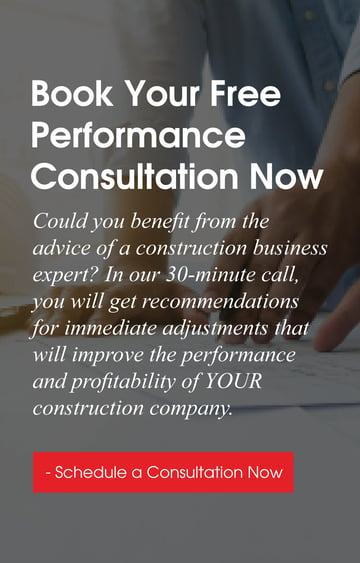Attracting and retaining employees, managing costs, and mitigating risks are key concerns for every construction business owner as they grow and develop in their industry. Navigating the ever-changing landscape of employee benefits, administration, costs, and risk management can be daunting to even the most seasoned professional. That is why it's essential for construction business owners to know how to choose a benefits partner that will shop the market for the most cost effective and comprehensive benefit plans for their organization, and help provide a long-term strategy for growth and development.
In the past, the role of a benefits broker was to shop the carriers to obtain the best prices for the most comprehensive benefits. However, as the industry has evolved, so has the role of the broker. Not only does the broker market all lines of coverage, but they are also engaged in benefits administration technology, compliance, human resources advisory, financial analytics, clinical wellness, communications, risk management, flexible benefit services, etc. With so much at stake, having the RIGHT benefits partner is key to growing a successful business.
We recently spoke with Todd Buchanan of McGriff Insurance Services and asked him what one should look for when selecting a benefits partner for their construction organization. He recommended finding a partner who:
- Knows and has clients in the industry in which you work
- Knows your business needs and long-term goals
- Has a service model that focuses on your company size
- Has leverage in the market
- Helps your organization remain compliant
- Provides clear strategies to control costs and support long-term growth
The first key to finding the RIGHT benefits partner is to find someone who has a thorough understanding of the construction industry in which you work and currently has clients in your industry. (Ideally, they would have first-hand work experience in that industry.) In addition, they should be willing to provide you with a list of references that you can contact about their services.
The second key to finding the RIGHT benefits partner is to find someone who takes the time to get to know you, your business, your business needs, and long-term goals. If a sales person shows up and gives you a ‘capabilities presentation’ (“Hey, we’re awesome. Here is what we provide and our pricing, etc.”) at your first meeting, they are probably not the individual you want serving your organization. They are mainly out to promote themselves and a product, not serve your needs. The right benefits partner will walk you through a discovery process to find out where you’re at now, where you would like to be, what issues are most pressing in your organization, what your priorities and long-term objectives are, and THEN come back with a comprehensive strategy to help your business accomplish these goals. The benefits partner’s role is to help bridge the gap between the current situation and your desired future with tools and resources to ensure the client gets to where they want to go. It is not to provide a ‘one-stop-shop’ prescription.
 The third key to finding the RIGHT benefits partner is to find someone with a service model that focuses on your company-size group. For example, it would not be beneficial for a small company to work with a large firm who is focused on large clients. Even though the firm might have tools and resources, they might not deploy all of those resources to their smaller clients. In addition, as they are mainly focused on their larger clients, they may not be as attentive to the smaller company's needs.
The third key to finding the RIGHT benefits partner is to find someone with a service model that focuses on your company-size group. For example, it would not be beneficial for a small company to work with a large firm who is focused on large clients. Even though the firm might have tools and resources, they might not deploy all of those resources to their smaller clients. In addition, as they are mainly focused on their larger clients, they may not be as attentive to the smaller company's needs.
The fourth key to finding the RIGHT benefits partner is to find someone who has leverage in the market based on their size and relationships with the Carriers. This means that because of the large volume of work the firm does with the carriers, they have ‘pull’ or leverage in those long-term relationships to negotiate a renewal, claim, etc. more quickly on your behalf.
The fifth key to finding the RIGHT benefits partner is to find someone who understands the ever-changing rules and regulations your size company must adhere to in order to remain compliant. If this is not done properly, your company can be penalized and fined, potentially thousands of dollars. The RIGHT broker will have compliance professionals, resources and expertise to guard against such penalties.
The sixth, and potentially the most important, key to finding the RIGHT benefits partner is to find someone who provides you with strategies to control costs and support long-term growth. Most people don’t know that all benefits brokers have access to the same carriers and products but, just because they have access to the same products doesn’t mean they offer the same value. It’s important to learn about the benefits partner’s strategy, resources, and tools prior to selecting them (i.e.: to save money, control costs, find alternate funding arrangements, enhance employee experience, etc.) as the products and strategy they provide should align with your current and long-term needs.
Bottom line: Pick your broker FIRST and then let them shop the market for you based on your needs and long-term goals.
Read More: New Tax Laws for Construction Companies
Commonly asked questions:
- What is the difference between working with a Professional Employer Organization (PEO) and a Benefits Broker?
|
PEO |
BENEFITS BROKER |
|
1. “Co-employ” your employees, becoming their employer of record for the purposes of taxes and insurance. Partnering with other organizations, they have greater buying power. |
1. Partners with your organization to help customize an affordable, easy-to-administer benefits package that meets the needs of your business. |
|
2. Best for start-ups, small companies, or other companies that don’t want responsibility or control. |
2. Best for middle and large companies, or smaller companies that want control (performance not tied to other businesses) |
|
3. Does not have access to all carriers in the open market. This means that you will have access to some, not all carriers, based on the particular PEO. |
3. Has access to all carriers in the open market. This enables the broker to selectively customize your long-term plan to meet your goals. |
|
4. Wraps everything into 1 package (payroll, HR, benefits, benefits administration, worker’s compensation, 401k, etc.) and is convenient, but not as cost-effective depending on group size. |
4. Separating services ‘cafeteria style’ could potentially reduce cost and provide tailored strategies to help meet your organizational objectives and long-term goals. |
- Does hiring a broker eliminate the need for a Benefits Administrator in my organization?
No, the broker is viewed as an extension of the Benefits Administrator’s team. The broker provides innovative solutions that manage costs, drive employee engagement and allow Benefits Administrators more time to focus on strategic initiatives.
- How is a broker compensated?
This varies and is usually based on the strategy and size of the organization. Many large employers that are self-funded use a fee model that is negotiated on the front end based on the services provided. In most small to mid-sized employers, brokers are paid commissions from the carriers, not by the client. This can be a HUGE advantage for the client.
For example, say a mid-sized construction company is going directly to a medical carrier (i.e. Kaiser Permanente). In most cases, they will pay exorbitant fees. Therefore, it’s in the company’s best interest to partner with a broker, because there is no additional cost and they will provide access to the additional tools and resources that will save you time and money.
- How do I choose between brokers?
As all brokerage firms have access to the same carriers and products, the competition lies in what the broker brings to the table in strategies, resources, services, and relationship. It’s key to develop a thorough understanding of the current plan designs, systems, processes, and culture to build tailored strategies to help meet your organizational objectives and overall success.
 Special thanks to Todd Buchanan for his contributions to this article.
Special thanks to Todd Buchanan for his contributions to this article.
Follow Todd On Linked In | Email Todd
Visit Mcgriffinsurance.com
If you're ready to start working on your business, let's talk!
Ascent Consulting’s mission is to Build Better Construction Companies.
We are committed to delivering impressive results in the areas of
profitability, performance and growth.

Ascent's founder and president, Adam Cooper has over three decades of experience in construction business ownership, sales & marketing, project management, construction technology, company operations and leadership.






Leave a Comment
Your email address will not be published. Required fields are marked *